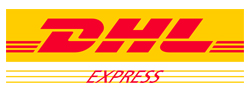Warehouses aren’t just about piling inventory on different shelves. They are an integral aspect of any fulfilment operation. So, if your business is associated with storing, picking, packing, and shipping items, it’s time to understand warehouse design in detail. That’s the prime objective of this post.
Your search for the best industrial properties for sale may not be successful if you don’t consider the warehouse design. So, here’s everything you should understand about types, importance, and other parameters when choosing the right layout.
Understanding the Importance of the Right Warehouse Layout
Successful warehouses always start in the most appropriate places. Inappropriate ones result in delays and unsatisfied customers. This is where the concept of warehouse layout comes into being. Simply put, warehouse layout or design isn’t solely about the physical structure of the area. It includes various components.
A decent warehouse ensures staff members have adequate space to maximise operations, resulting in a seamless inventory flow. The modern-day warehouse includes automation technologies to reduce manual errors. In short, such a space reduces time and workers’ effort.
A List of Warehouse Designs You Can Choose from
Your warehouse design depends on the space requirement, business goals, and transportation available. You can select any of the following warehouses depending on these three factors.
U-Shaped Warehouses
The shipping and receiving docks are placed at opposite ends in a U-shaped warehouse. Their simplistic design attracts modern entrepreneurs. Once the orders are received, products are placed in the staging area. After sorting, they are placed at the storage locations. Here, storage is available in two main categories: static and dynamic.
Static storage is for slow-selling products that are stored for longer, but dynamic storage is for items in high demand. With a U-shaped warehouse, you can better streamline your inventory flow and keep items stored separately. Employees can move their products between the two stages of receiving and shipping since they are done on opposite ends. So, it ensures less equipment loading or unloading.
Selecting a U-shaped in-city warehouse promotes workflow while minimising backtracking. It’s an ideal choice for businesses with medium or high order volume.
L-Shaped Warehouse
The prime USP of an L-shaped warehouse is that it uses two adjoining walls to store items. The shipping and receiving docks are strategically placed to improve workflow. On one side, you will find the unloading and receiving areas, while on the adjacent side, you will find the picking and shipping areas. They are placed such that the area creates a 90-degree angle.
An L-shaped warehouse does it all, from reducing the back-and-forth movement to facilitating better accessibility to receiving and shipping, After all, it separates the shipping and receiving areas on opposite sides to prevent traffic congestion. Besides offering some benefits of the U-shaped layout, this design allows you to utilise odd spaces easily.
I-Shaped Warehouse
Next comes the I-shaped warehouse – a fan-favourite consideration for modern businesses. If you constantly want to monitor how your workers perform their duties, you can get a clear “in and out” view of the product workflow. Bigger companies can select such space to produce higher volumes.
Unloading and receiving happens on one side of the warehouse, while storage remains in the middle. On the other side, shipping takes place. That’s how an I-shaped warehouse runs. The space looks similar to the assembly line, so it reduces movement. In addition, it also results in longer travel distractions.
Factors to Consider While Selecting the Right Warehouse Design
You need to consider several parameters for optimal warehouse workflow and design. The following are a few factors to consider when evaluating the choice for the right warehouse:
Your Budget
Building a perfect warehouse is all about creating a space that optimises your workflow. However, investing in a warehouse purchase might be time-consuming. So, ensure that you conduct an analysis before deciding on whether you want to buy or rent the space.
Space Requirement
How much space do you need in your warehouse? How do you want to divide the space? Do you want three separate spaces for unloading, storage and shipping? If so, you may need an I-shaped design. Otherwise, you can opt for the L-shaped or U-shaped design. Ultimately, selecting the right space ensures maximised storage capacity. So, you can form clusters of items by stacking or grouping similar products together. This results in accurate sorting.
How Many Labours Will Work
Comprehending staffing requirements helps you better estimate the number of individuals you need in the space. So, you must ensure that the warehouse layout doesn’t hamper productivity.
Type of Equipment Do You Need
Next comes the type of equipment you want to work within the warehouse. To operate at full capacity, you need equipment like conveyors, shelving, forklifts, packing and lifting tools, etc. After assessing the equipment requirement, evaluating the right warehouse layout becomes easier.
Safety Protocols
You also need to ensure worker’s safety. While selecting the warehouse layout, you must consider safety guidelines as per the local government and authorities.
Considering these things, you can get the best industrial space solutions and reduce operational costs accordingly. So, now that you understand the importance of a perfect warehouse design, it’s time to select a spacious layout that truly holds value to your business.









